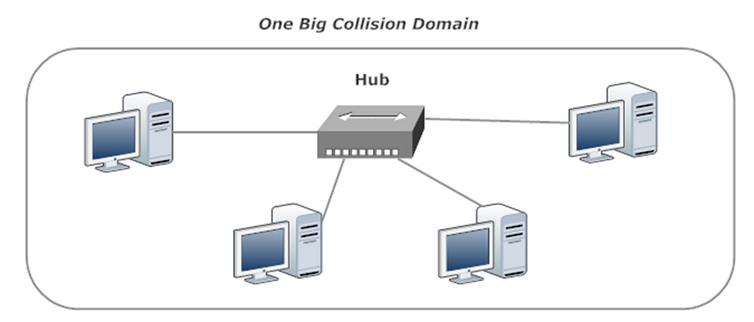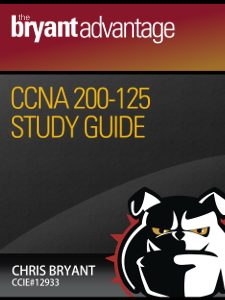CCNA / Network+ Tutorial: The CSMA/CD Process
In the first part of this free CCNA and Network+ course on switch fundamentals, we took a look at two of the network devices that preceded switches; namely, repeaters and hubs. In this tutorial, we’ll see how hubs use CSMA/CD to avoid data collisions (great stuff to know for your exams!)
Here’s our network:

All four hosts connected to that hub are said to be in one collision domain since data sent by any of the hosts can collide with data sent by any other host. To prevent the loss of data and time associated with collisions, Carrier Sense Multiple Access with Collision Detection (CSMA/CD) was developed. Here’s the CSMA/CD process:
- Before sending data, a host will check to see if any other host is already sending data. This is listening to the wire.
- If that check reveals another host is currently sending data, the listening host backs off for a few milliseconds before it listens to the wire again. That process repeats until the listening host detects that no other host is currently sending data. When that listening host detects no action on the wire, the host sends its data.
- If two PCs happen to send data at the exact same time, the voltage on the wire itself changes, signaling to the hosts that a data collision has occurred.
- In this case, the PCs that sent the data will generate a jam signal, indicating to the other hosts that data should not be transmitted at this time.
- The PCs that sent the data involved in the collision then invoke a backoff timer. When each host’s random timer expires, they will each begin the CSMA/CD process again by listening to the wire. The backoff timer is set to milliseconds and is a random value, so the odds of another collision involving these hosts and this particular data is unlikely.
CSMA/CD introduces delays we’d rather not have, particularly with the high level of delay sensitivity when handling voice and video traffic. These collisions and delays are bad enough, but there’s another major issue with hubs — the fact that all hosts connected to the hub are also in one big broadcast domain.
We’ll examine broadcast domains in the next installment of this free course on switching fundamentals, followed by a real-world discussion on how switches can break up both collision domains and broadcast domains. See you there, and as always, thank you for making my work a part of your success story.
CCNA and Network+ Tutorial: Broadcast Domains
Chris B.
Coming In December….





